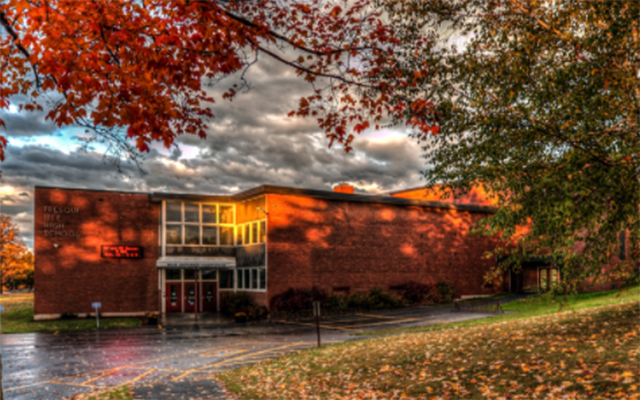Maine School Administrative 1 superintendent Brian Carpenter said he has seen the challenges of the teaching profession evolve over his education career, first teaching middle school math and later working in management.
“Paperwork has increased a lot,” said Carpenter, who taught in Madawaska and Mars Hill schools in the 1990s. “The administrative load is sometimes overwhelming.”
Districts like SAD1 that have seen steep enrollment declines for decades and reduced state funding have struggled to recruit teachers for areas such as special education or foreign languages.
“It’s almost impossible to get a foreign language teacher in this area,” Carpenter said, adding that foreign languages was one of the programs that many school districts reduced after the state funding cuts in the wake of the Great Recession.
SAD1 has all of its special education teacher positions filled currently, but it can be hard to fill them, and the pool of applicants for positions has been shrinking, Carpenter said.
“I’m getting 2-3 applicants now. In the past we got 10-to-15.”
Special education teachers face some of the toughest challenges among educators, working with children who have intellectual disabilities and behavioral disorders. They also have more paperwork than regular classroom teachers and aren’t paid more.
“Most special education teachers go into the regular classroom if they have the chance,” Carpenter said.
“New teachers may spend four years teaching and they find out it’s not for them. If they have a degree in math, they go as an actuary for an insurance company,” Carpenter said.
“Proficiency-based education is probably going to cause some teachers to leave the profession,” he said, referring to the newest wave of state-mandated academic standards.
Carpenter said that the relatively low pay for new teachers is another challenge that school are up against.
Under SAD1’s current teachers contract, new teachers with a bachelor’s degree earn $31,240 for their first three years, with a raise to $33,068 for years four and five and to $35,590 for years six and seven. In this contract, teachers with a bachelor’s degree don’t start earning more than $40,000 until they’ve spent 12 years teaching.
Teacher salaries are similar in the central Aroostook region, as are concerns about the future of the teaching workforce.
“We haven’t experienced a real issue yet, but the issue of teacher availability is universal,” said Roger Shaw, superintendent of the Easton school district, where entry-level teachers earn $30,820 in their first year.
“It all depends on what position you’re hiring for. If you’re looking for math, science or language, good luck.”
Carpenter, who went to the University of Maine Presque Isle for his secondary education degree, also worries about the flow of the teaching pipeline as baby boomer teachers retire.
“There’s going to be a big swing in the next 10 to 15 years and the teacher colleges in the area do not have the students to fill those vacancies.”








